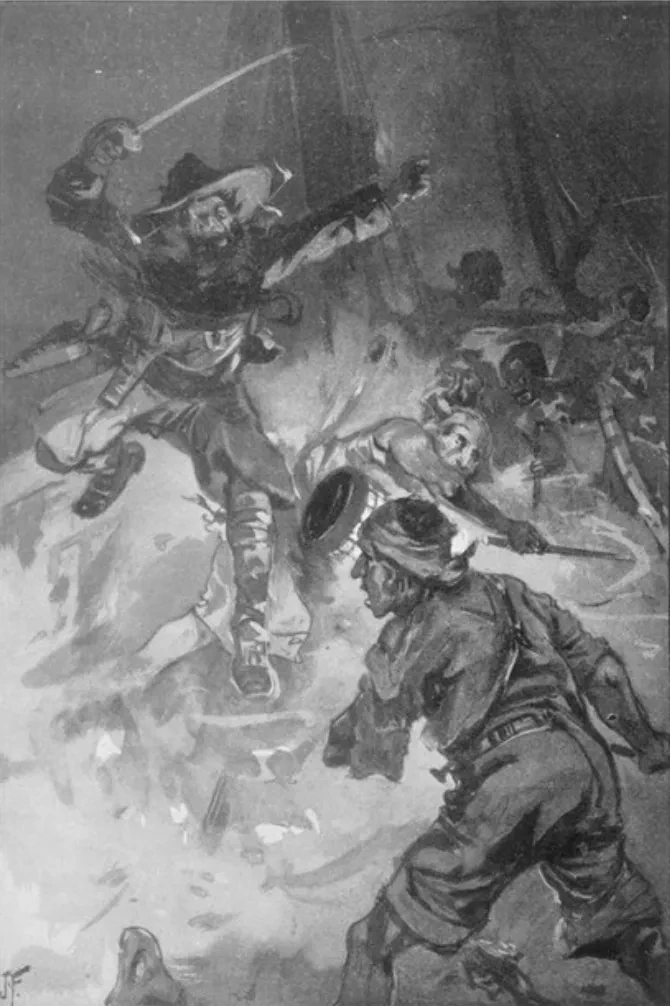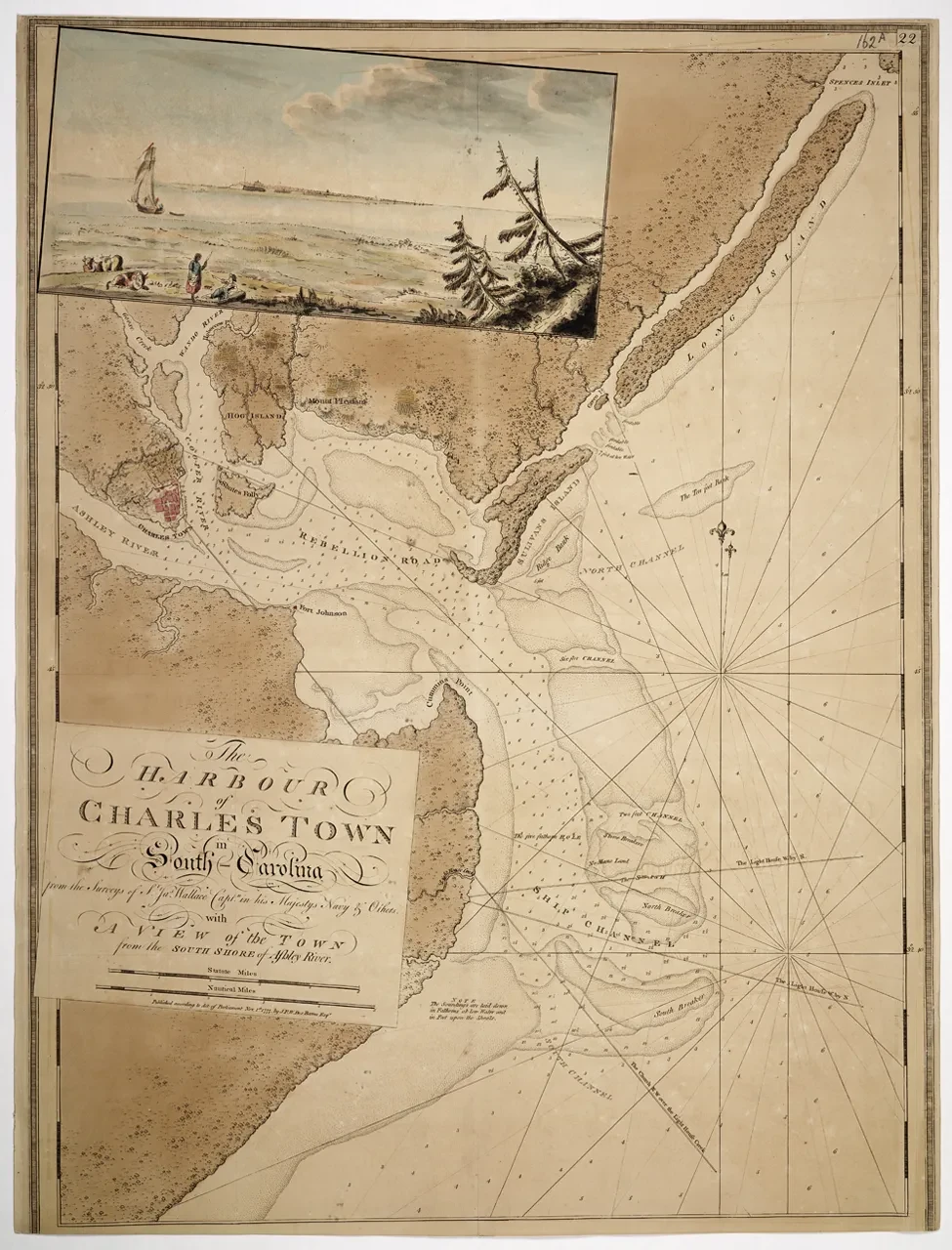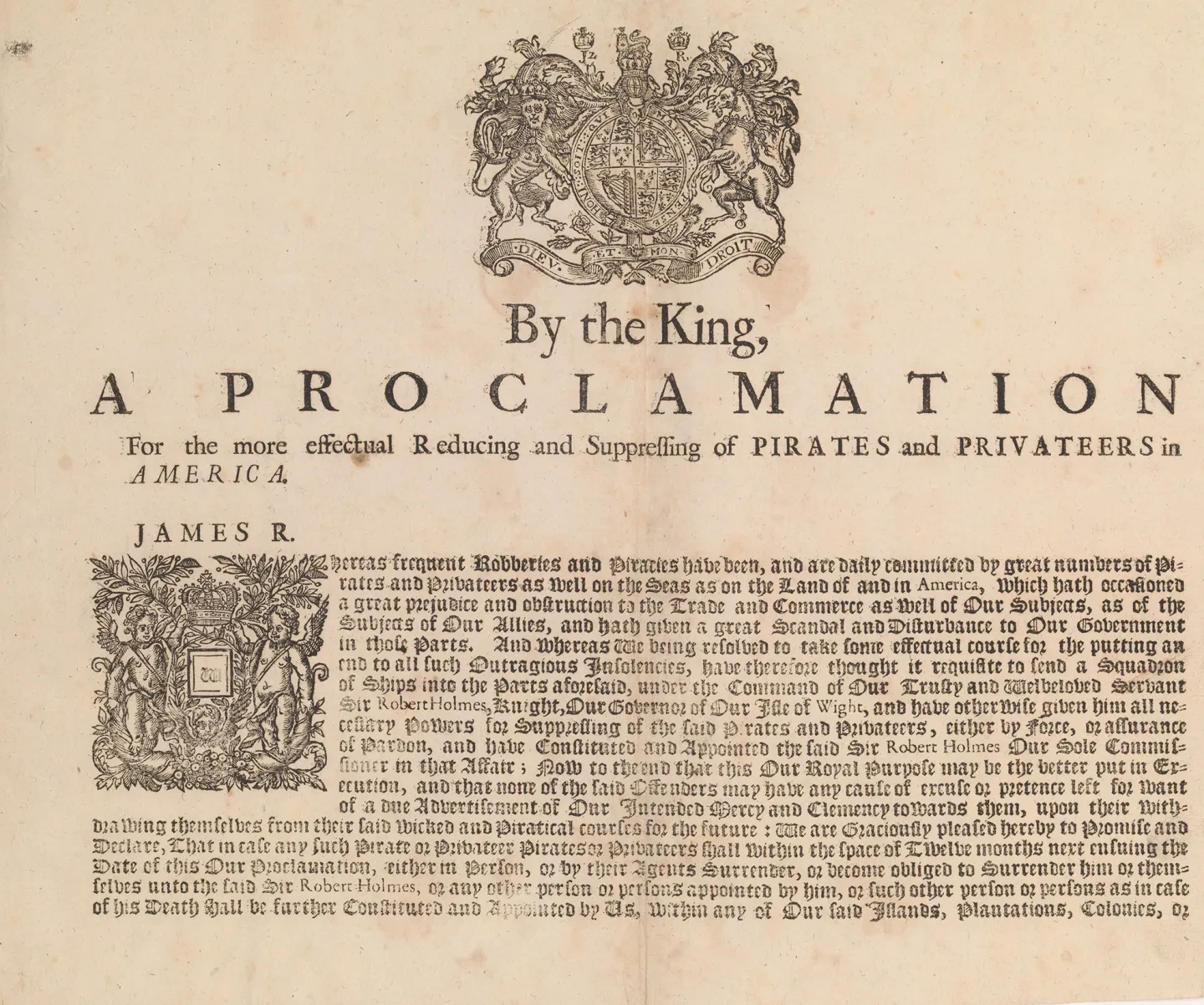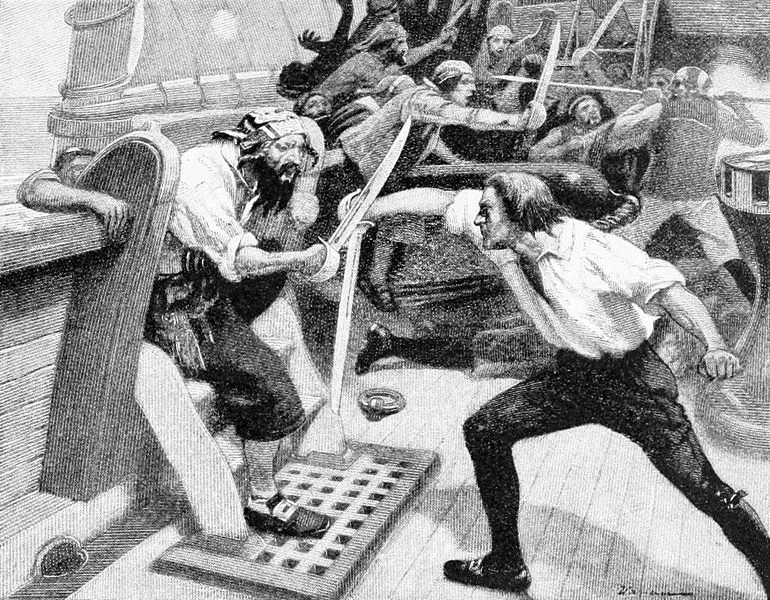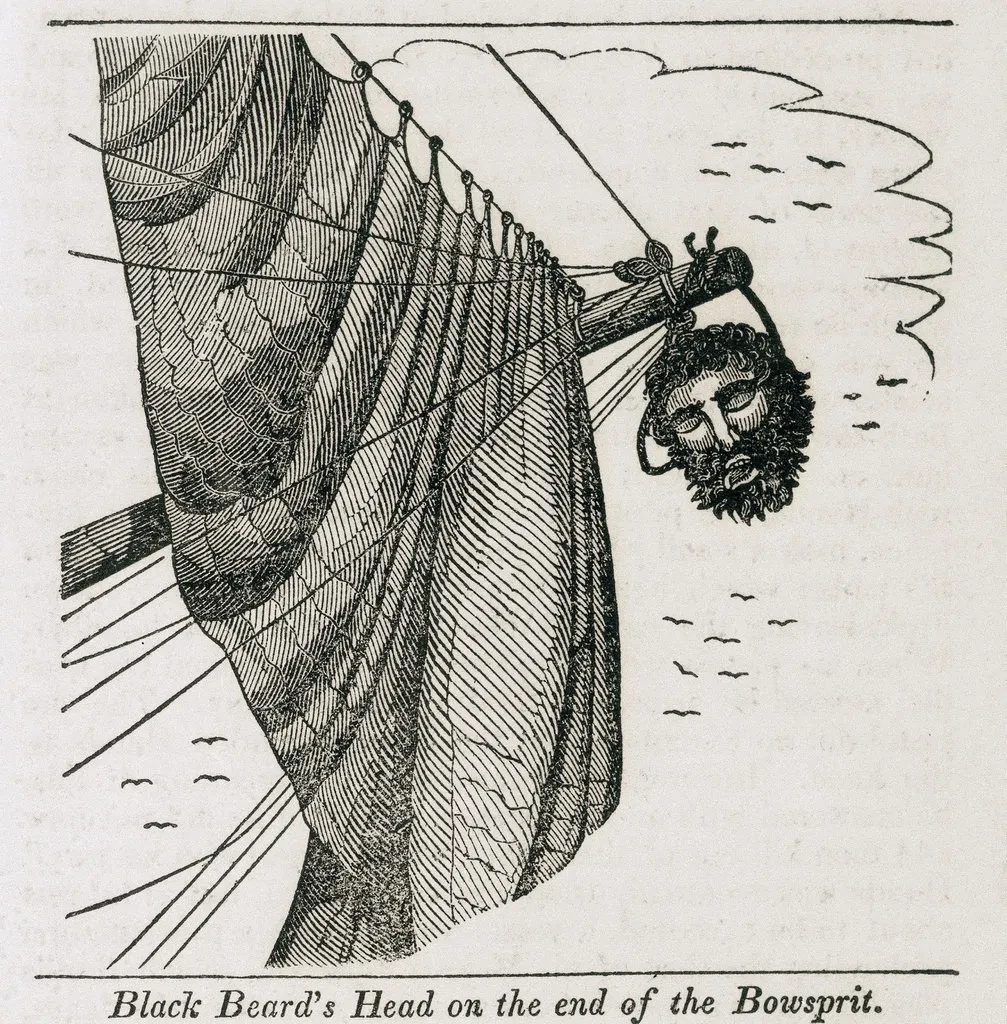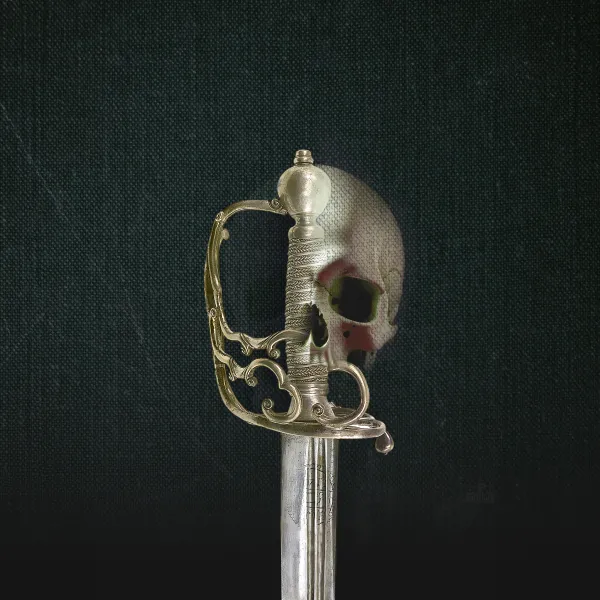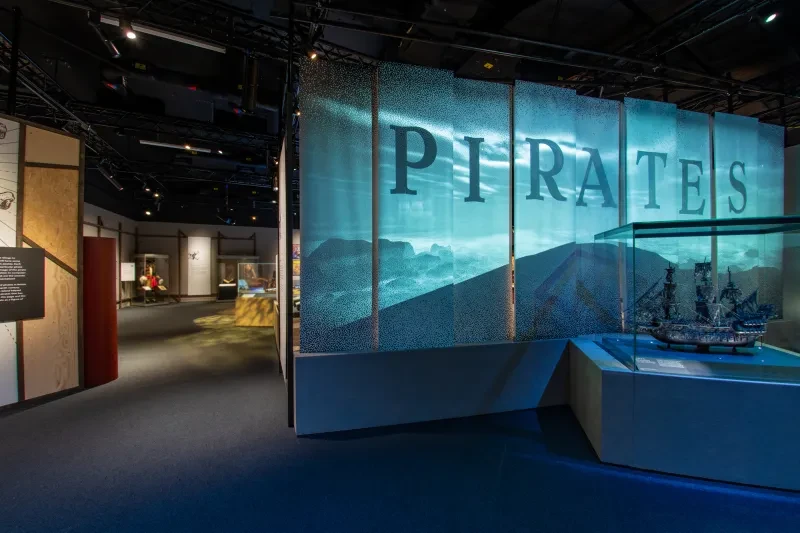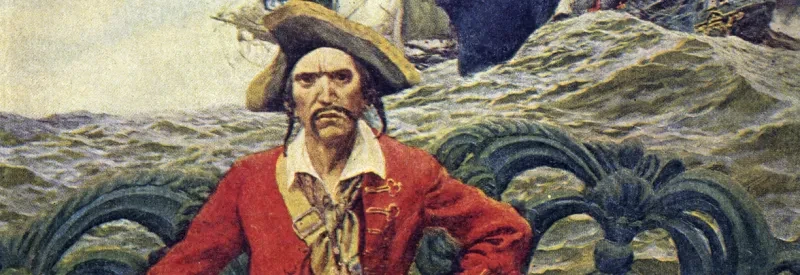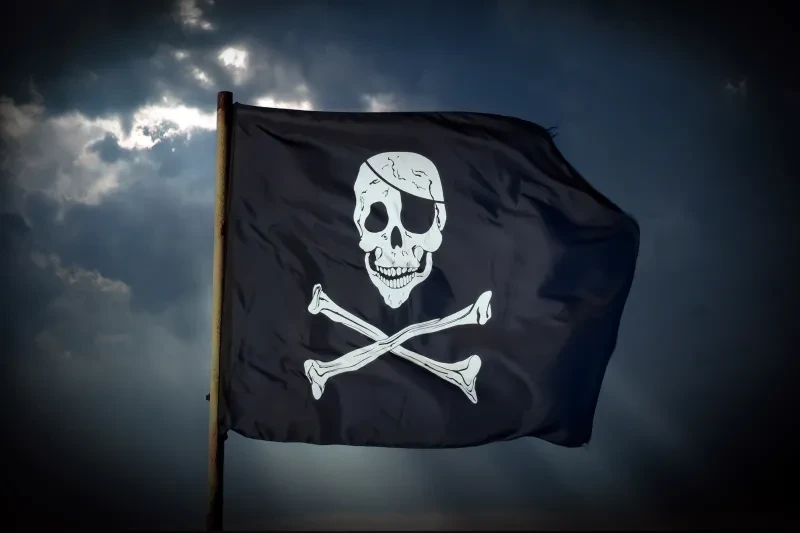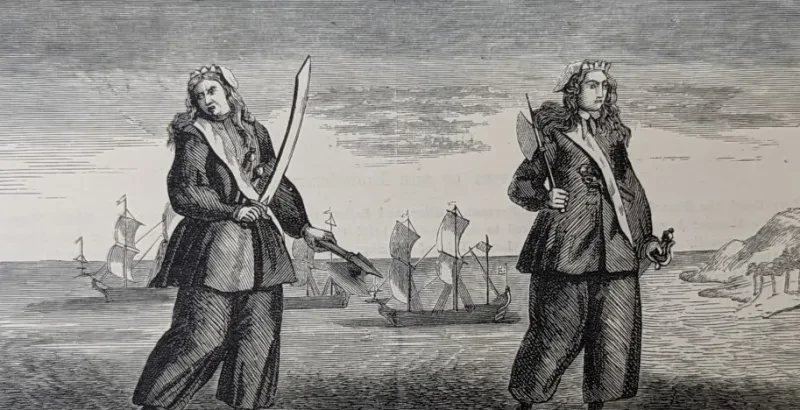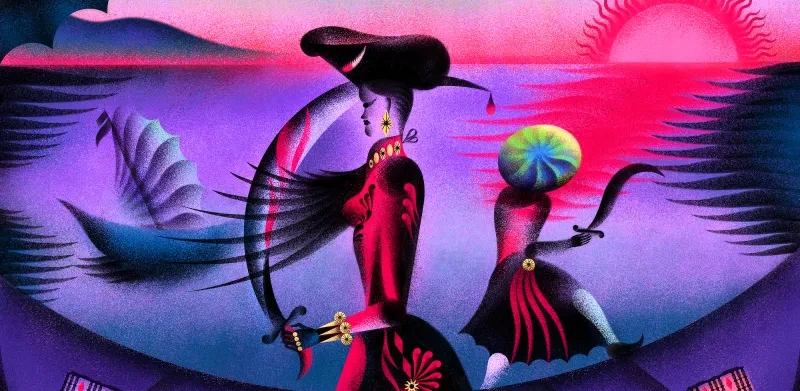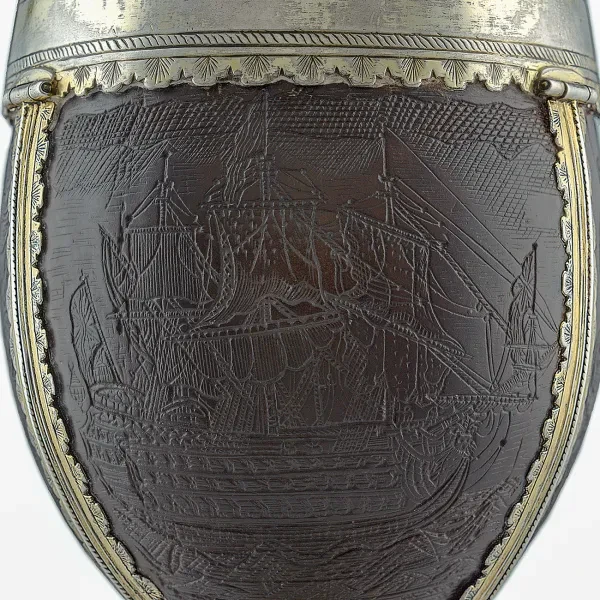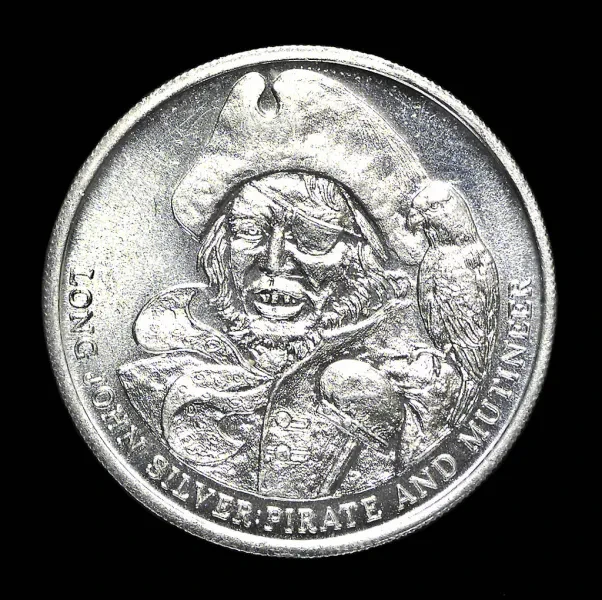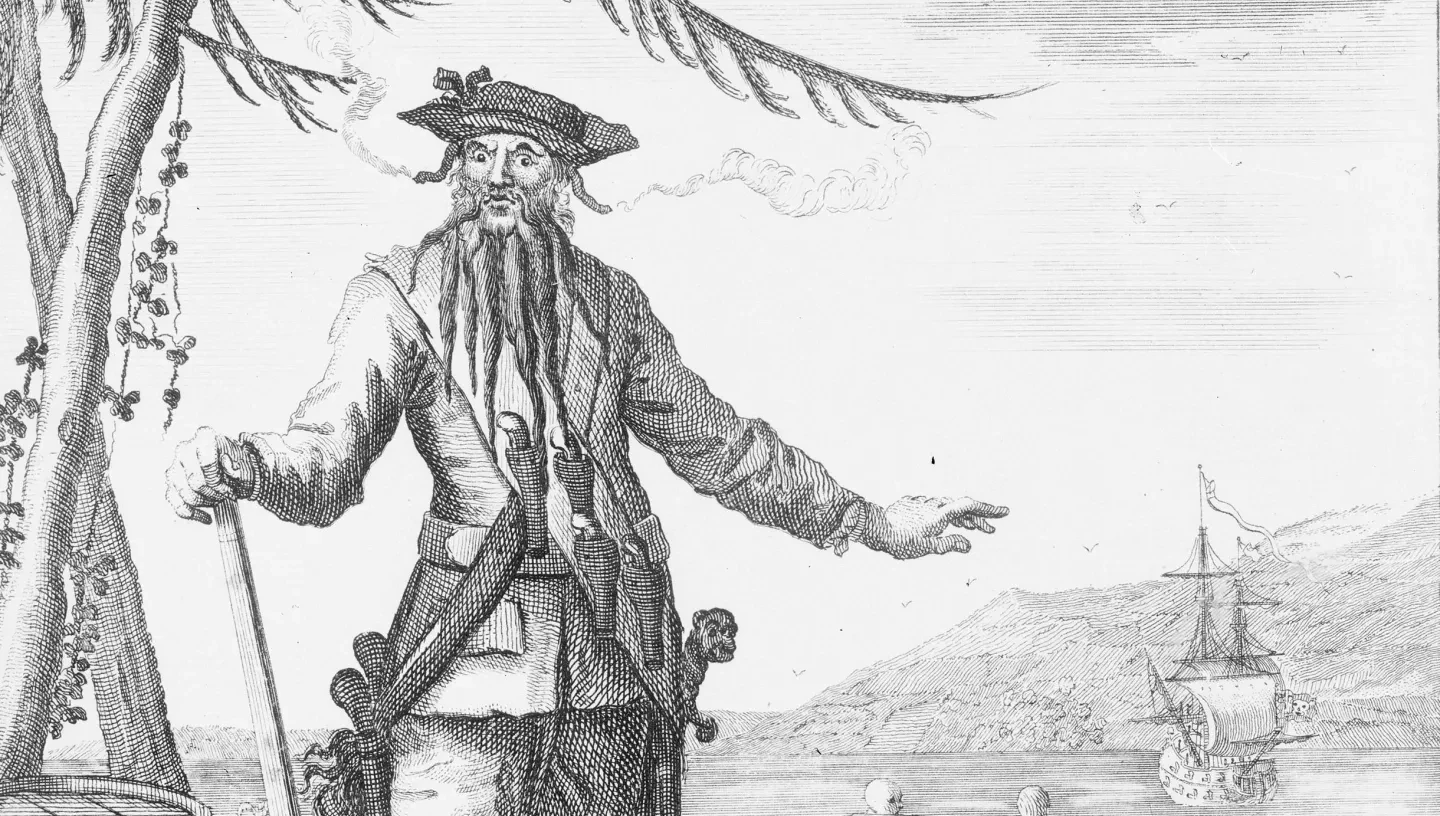
Blackbeard, real name Edward Teach or Thatch (c.1680-1718), is one of the most infamous British pirates in history.
While his piracy career only lasted two years before his death at the hands of the Royal Navy, his fearsome appearance and hell-raising antics became the stuff of lore and secured him an enduring legacy.
With his long black beard and three pairs of pistols strapped across his chest, Blackbeard’s appearance was designed to terrify victims into surrender.
Now a major exhibition at the National Maritime Museum promises to trace the changing depictions of pirates such as Blackbeard through the ages, and reveal the brutal reality behind the fiction.
Discover more about Blackbeard’s life – from his first forays into piracy, to how he met a grisly end.
Not a great deal is known about Blackbeard’s early life, but he is believed to have been born in Bristol around 1680.
Blackbeard’s real name is widely thought to be Edward Teach, but in sources he variously appears as Thatch, Thache or Thack.
Captain Charles Johnson’s 1724 book A General History of the Pyrates – the source for much of what we know about Blackbeard’s life and exploits – suggests that Teach was a British privateer during his early career at sea. A privateer is an individual commissioned by a country during wartime to attack, plunder and capture enemy ships: a form of officially-sanctioned piracy.
After the war many privateers would continue to ransack ships without state sanction - as pirates.
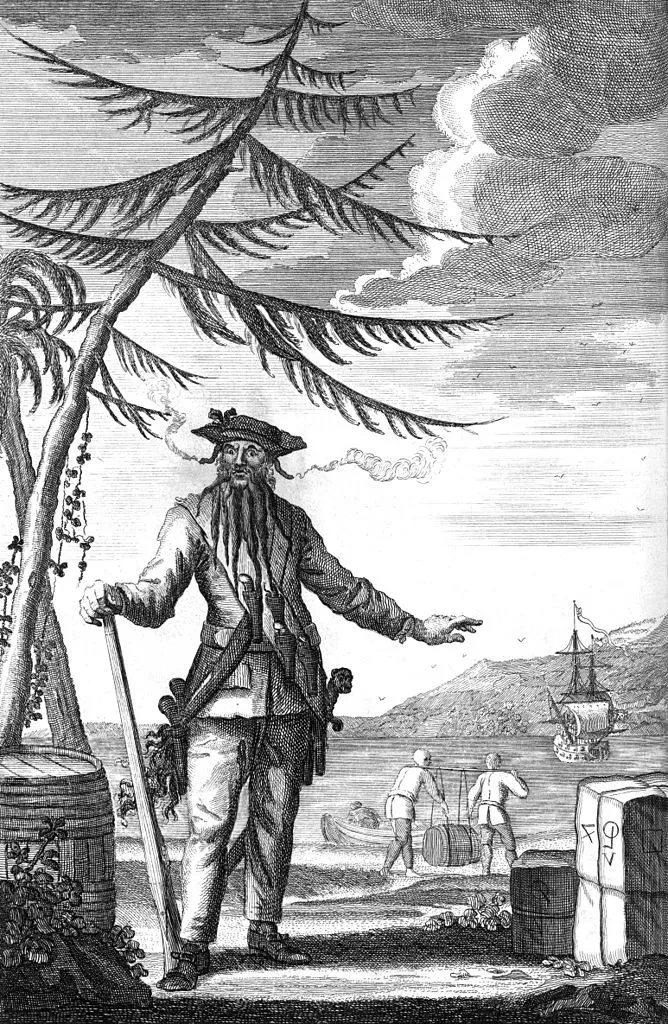
How did Blackbeard get into piracy?
Blackbeard’s career falls within what is sometimes known as the ‘golden age’ of piracy, a period from around the 1680s to the 1720s when piracy was rife in the Caribbean.
Teach’s privateering reportedly turned to piracy under the instruction of Captain Benjamin Hornigold. Hornigold had been active as a pirate since 1713 and was a key player in the establishment of the Republic of Pirates in the Bahamas.
Teach rose quickly through the ranks until around 1716, when Hornigold made him captain of a captured ship with a small crew of his own. Another ship, the Revenge – captained by the ‘gentleman pirate’ Stede Bonnet – later joined their growing flotilla.
Johnson’s History of the Pyrates relates how Blackbeard removed Bonnet as captain of the Revenge, reportedly telling him that “as he had not been used to the Fatigues and Care of such a Post”, Bonnet should instead join him on board his own ship and “live easy and at his Pleasure”.
Blackbeard’s flagship: Queen Anne’s Revenge
In November 1717, Teach captured a merchant ship named La Concorde, which was being used as a slave ship by the French. He renamed the vessel Queen Anne’s Revenge.
While the ship was only in use for a year, it was Blackbeard’s flagship vessel and he equipped it with an imposing 40 guns. Capturing ships and pillaging his way around the Caribbean, Teach built up a flotilla crewed by an estimated 300 men and accumulated a vast fortune.
Blackbeard’s appearance
Early descriptions of Blackbeard have inspired generations of storytellers – and helped make Edward Teach one of history’s most notorious pirates. Captain Charles Johnson in his General History says that “imagination cannot form an idea of a fury from hell to look more frightful.”
As you might assume from the name, Blackbeard had a long, bushy black beard, which was reportedly plaited and tied with ribbons. He even placed slow-burning, smoking fuses in the beard when attacking ships – a terrifying sight for potential victims.
Blackbeard was also armed with three pairs of pistols strapped across his chest, and cutlasses and knives hanging from his clothes. His fearsome appearance was likely designed to encourage crews of victim ships to surrender their goods without a fight – an ideal outcome for the pirate.
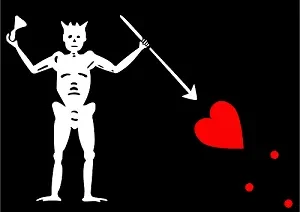
Blackbeard’s crew, flag, and life at sea
- Blackbeard’s crew came from a variety of backgrounds, ranging from wealthy men to ex-privateers, crew from captured ships, and those from the lowest classes of society.
- The crew included a significant number of Black men and at one point they made up more than half of his pirates.
- Contrary to what you might expect from someone with a reputation like Blackbeard, he divided the spoils among himself and his crew according to a generally agreed pirate code.
- Blackbeard hoisted a black pirate flag as he went into action. His flag depicted a horned skeleton stabbing a heart with its spear and holding an hourglass.
- Charles Johnson in his biography states that Blackbeard had 14 wives, though documentation shows that legally he only married once.
- Did Blackbeard bury his treasure? Sadly, pirates burying treasure is very likely a myth. Most of the booty seized would have been trade goods like spices, silks and wine rather than gold and jewels stored in treasure chests.
Blockade of Charleston
In May 1718 Blackbeard and his crew blockaded the port of Charleston in South Carolina. Ships attempting to leave or enter the harbour were captured and their crews taken hostage.
Blackbeard demanded a ransom from the government which included a chest of expensive medicines, and he threatened to kill his prisoners if his demands weren’t met. Eventually the townspeople gave in, the prisoners were released and Blackbeard sailed away.
Abandoning Queen Anne’s Revenge
In June 1718, Queen Anne’s Revenge and a smaller ship named Adventure ran aground on a sandbar while entering Beaufort Inlet, North Carolina.
The reason for this incident is unclear, although some accounts suggest that Blackbeard ran aground deliberately in an attempt to keep only his closest crew – and sail away with the best treasure.
In 1996 the wreck of Queen Anne's Revenge was discovered; to date more than 400,000 artefacts have been recovered.
Pardon, retirement and return to piracy
As the threat of piracy grew, the British government responded by offering a pardon to any pirate willing to renounce piracy and declare loyalty to the Crown.
Anyone who accepted the offer would not face punishment for past crimes. Pirates who refused however faced capture, trial and hanging.
At first Blackbeard accepted the offer for himself and his crew, surrendering to North Carolina governor Charles Eden. However, he quickly returned to his former ways.
Charles Johnson writes that Blackbeard took the pardon ‘only to wait a more favourable Opportunity to play the same Game over again; which he soon after effected, with greater Security to himself, and with much better Prospect of Success, having in this Time cultivated a very good understanding with Charles Eden, Esq; the Governor above mentioned.’
Teach continued to raid vessels, exploiting and making a mockery of his pardon, this time with Eden on his side.
How did Blackbeard die?
Edward Teach died on 22 November 1718.
In late 1718, the Governor of Virginia Alexander Spotswood decided to put an end to Blackbeard’s escapades once and for all. Offering a £100 reward, Spotswood assembled a team of pirate hunters to capture Blackbeard dead or alive.
Among them was Royal Navy First Lieutenant Robert Maynard from HMS Pearl, who located Blackbeard on 21 November 1718 among the shallows of Ocracoke Inlet. Blocking all exits, Maynard entered the inlet at dawn on two smaller sloops named Jane and Ranger hoping to surprise Teach and his crew.
A confused and bloody action followed in which Maynard engaged Blackbeard in a hand-to-hand fight, and members of Maynard’s crew joined in the attack to help finish off the pirate. By the time he was killed, Blackbeard had received 20 cutlass wounds and five pistol shots.
Maynard cut off Blackbeard’s head and hung it from the bowsprit of his sloop Jane, throwing the body overboard.
Twelve other pirates were killed in the action. The surviving members of Blackbeard’s crew were later tried in Williamsburg, where 13 were hanged.
For many years, Blackbeard’s severed head was visible on a stake at Chesapeake Bay in Virginia. One of the legends surrounding Blackbeard says that his skull was later lined in silver and used as a drinking vessel!
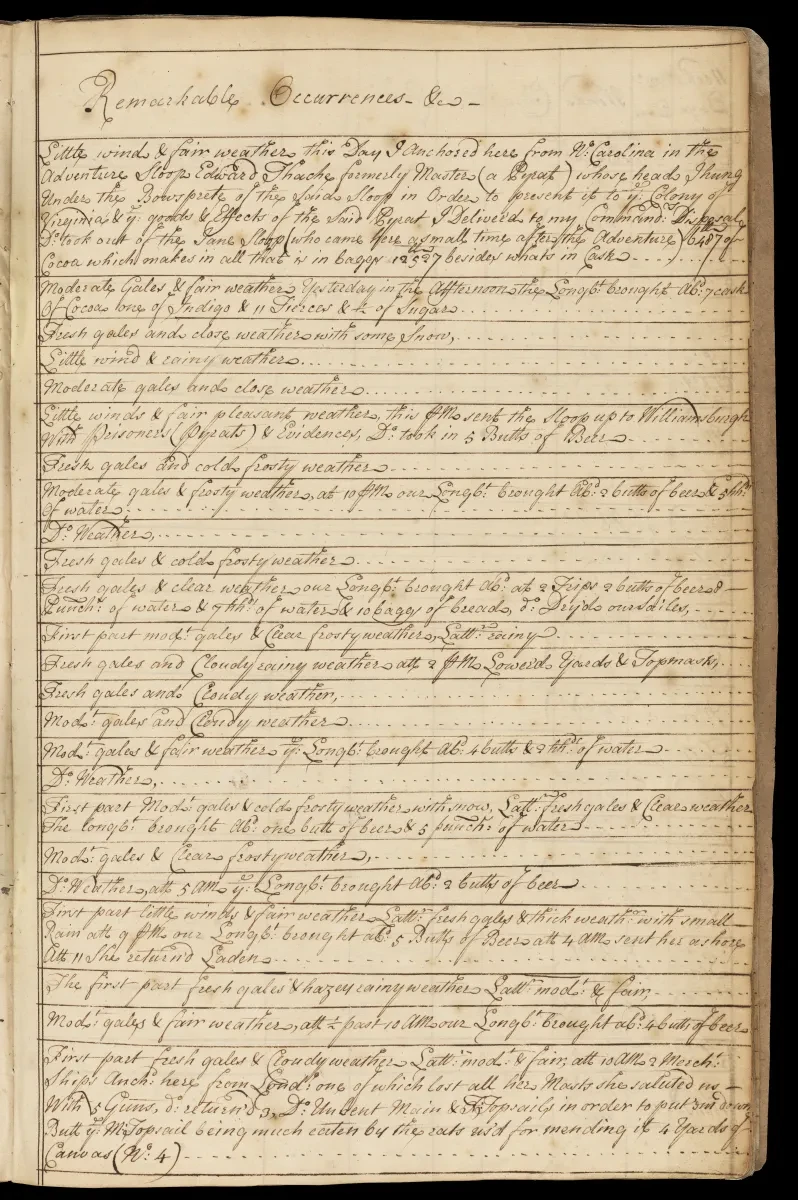
Lieutenant’s logbook for HMS Pearl, 22 guns
Ink on paper, by Lieutenant Robert Maynard, 1718–19
This logbook, kept by Lieutenant Maynard and now in the collections of the National Maritime Museum, records the fate of Blackbeard:
'Little wind & fair weather, this day I anchored here from North Carolina in the Adventure Sloop Edward Thache formerly Master (a Pyrat) whose head I hung Under the Bowsprete of the Said Sloop in order to present it to ye Colony of Virginia & ye goods and Effects of the said Pyrat I delivered to my Commanders Dispersal.'
Blackbeard’s legacy
Charles Johnson’s General History and his accounts of the period’s most notorious pirates – including Blackbeard – directly inspired works such as J.M Barrie’s Peter Pan and Robert Louis Stevenson’s Treasure Island. Israel Hands, one of Blackbeard’s closest crew, appears as a character in Stevenson’s novel, while Captain Hook in Peter Pan is said to have been “Blackbeard’s bo’sun”.
Blackbeard’s screen history is just as storied, from Blackbeard, the Pirate in 1952 to TV series such as Blackbeard in 2006. More recently he has appeared in the Pirates of the Caribbean franchise, One Piece, Doctor Who, Black Sails, Our Flag Means Death and Assassin’s Creed 4.
“Blackbeard’s career as a pirate leader had lasted no more than two years,” write David Cordingley and John Falconer in Pirates: Fact and Fiction. “But in that time he established a reputation which led to him becoming one of the most famous of all pirates.”
